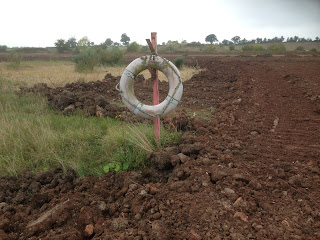American Golden Plover
American Golden Plover
Eyebrook Reservoir
Happy twitchers
No less than ten American Golden Plovers reported last week around the UK and with one landing at Eyebrook Reservoir in Leicestershire made it a definite target over the weekend. Eyebrook is about 1 hr 15 mins from home and sits right on the border between Leicestershire & Rutland.
I was all set to go on Saturday morning however there was no early news reported until the afternoon giving hope that it would be worth going on Sunday. With the weather looking much better on Sunday I decided I'd arrive at the same time the Plover did on the Saturday. With the clocks going back that morning it wasn't as early.
On the way over I passed a small roost of six Red Kites which took off as I passed. The reservoir was picturesque and around 30-40 birders were all stood waiting for the Plover to arrive. With the scope set up we didn't have to wait long until Golden Plovers started to land on the mud at the end of the reservoir. Watching the flocks closely I then picked up the American Golden Plover coming into land. After landing for a few seconds the flock took off before most birders saw the bird but thankfully the full flock landed again to allow everyone some great views.
The bird couldn't be missed and was very distinguishable standing out well from it's cousins the European Golden Plovers. The birds plumage looked to be adult moutling.
Other sightings included a Goldeneye, Greylag, Wigeon, Shoveler, Red-legged Partridge, Canada Geese, 2 Dunlin, Lapwing and Great Crested Grebes.



















































